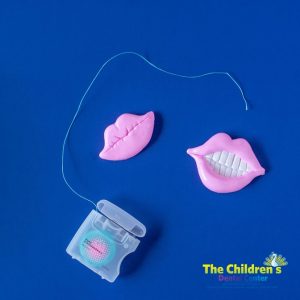CALL TODAY! 908.526.1600


Flossing is a necessary part of proper oral care, but many Americans either avoid it or aren’t doing it correctly. Whether you’re teaching your child flossing or just want some pointers yourself, this guide for you and your children can help ensure you’re properly cleaning between your teeth.
Correct Cleaning Takes the Right Tools
When cleaning between the teeth, make sure you’re using tools actually designed for flossing between teeth. This might seem obvious but studies have shown that Americans use anything from their fingernails to their silverware to clean between their teeth. Some even reported using crazy objects like pocket knives and wires! This is not only less effective for cleaning, but dangerous as well. Flossing with non-ADA approved objects can cause pain or damage the enamel and are often unsanitary, so make sure you and your children are only using ADA-accepted interdental cleaners.
Anytime is a Good Time
A question people often have about flossing is when exactly they should be flossing. In the morning? At night? After meals? The timing seems to be a real hangup for a lot of people. Well, the answer is very simple. As long as you’re flossing at least once a day, the timing isn’t important. The most important thing is that you’re actually flossing every day and doing so properly. Beyond that, you can adjust your flossing schedule to suit your needs. Many people choose to floss in the morning or at night to coincide with their daily toothbrushing, but the choice ultimately depends on choosing a time of day that you personally will be able to stick to.
Proper Form for Perfect Flossing
Now that you’re flossing, the next step is making sure you’re flossing correctly. When using standard dental floss, the first thing to do is take about 18 inches of floss and wind it around your middle or index fingers on both hands. Next, take an inch or two of the floss and bring it between the contact of two teeth. Then, glide the floss back and forth between your teeth, contouring it around each tooth with a C shape. Be gentle while doing this. There shouldn’t be any pain or bleeding, and if there is that’s probably a sign your flossing too hard. Finally, slide the floss up and down the tooth and under the gum line to ensure it’s reaching the whole tooth. Repeat this process for each tooth making sure to get out all the food particles and plaque.
When Should My Children Start Flossing?
When it comes to keeping your children’s teeth and mouth healthy there’s no such thing as too early. As soon as your child has two teeth that touch, it’s important to make sure you are flossing between them. For younger children, flossing may be difficult. Most children will find it hard to properly floss until around age 10, so it may be beneficial for you to help them do a complete job.
Want to be sure your child’s teeth are clean? Proper flossing and in-home care is a must, but so is regular dentist check-ups! At The Children’s Dental Center, we make sure your child is getting the oral care they need in fun and friendly environment they’ll want to go to! Schedule your child’s next appointment today!